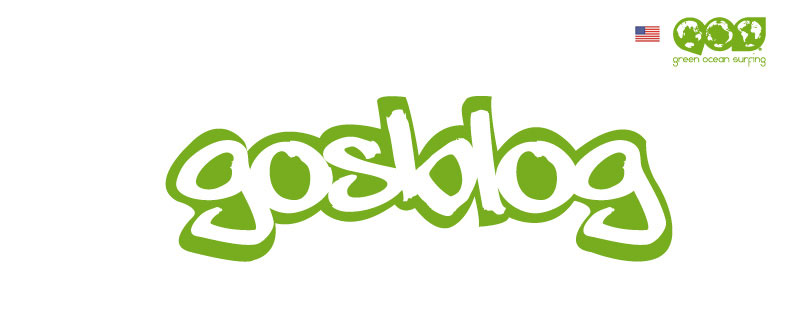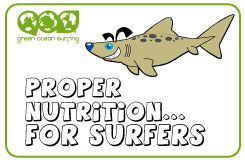Pollution: the current state of Italy’s coastal areas
Here’s a very interesting report by Legambiente, dated August 2010 but currently of interest, depicting the current state of Italy’s coastal areas. This article is useful for both our Italian and international readers, considering the number of tourists who come visit Italy (of which we are very pleased and proud!!), its art and towns as well as sea resorts.
This report is quite disturbing… unfortunately Italy’s a beautiful country only in a postcard, while if you take a closer look at it it’s pretty dreadful… especially in terms of its huge environmental problems and protection. Over the past few days, the government has been dealing with a protest that sparked in Campania due to the waste disposal issue and some members of the Italian government just dismissed the issue, making arrogant statements. The point is NOT who made mistakes in the past or who’s making the decisions today. Perhaps we are just tired of paying the consequences of other people’s “crimes” and, like Mother Nature, we’ve had enough. Italians are lucky to live in such a wonderful place and it’s time to roll up our sleeves and do something! We owe respect to this country!
2010 Goletta Verde’s outcome: 169 critical areas
169 critical areas threaten the “health” of the Italian sea, one every 44 km of coast. 132 river mouths are polluted. Campania, Calabria and Sicily earned the summer 2010 “black shirt” for the most polluted sea. 15% of Italians are NOT connected to sewerage, while 30% of them, i.e. 18 million citizens, dispose of untreated household fluid and solid waste directly in rivers, lakes and the sea. Sardinia and Puglia, instead, positively stand out and have been assigned positive points, the so-called “sails”, which are awarded to coastal towns by Legambiente and Touring Club, in accordance with the 2010 Blue Guide.
This is the final outcome of ‘Goletta Verde’ – the historic Legambiente campaign that aims to monitor and provide information on the “health” conditions of Italy’s coastal areas, sea, rivers and lakes.
A two-month, 2000-mile journey along Italy’s coast and 25 legs, to monitor the sea and denounce cases of beach access being denied, violations of building regulations in coastal areas, new yet useless tourist harbors and energy threats: oil – off-shore drilling, refineries located on the coast and oil tankers – as well as the risk posed by new nuclear or coal-fired power plants.
The 25th Goletta Verde report put a spotlight on the key problems of the marine and coastal ecosystem; it analyzed river mouths and sea stretches that are polluted due to failure of or insufficient waste treatment and illegal waste disposal. And the outcome of this journey is not at all positive: there is a critical area every 44 km of coast and 87% of the contaminated samples collected by ‘Cigno Verde’ biologists are severely polluted, with quantities of bacteria of fecal origin that are double the allowed maximum limit imposed by law. These figures reveal a drop in water quality conditions compared to last year, when 81% of the samples analyzed were polluted.
The results of the Goletta Verde analysis of river mouths reveal that Italian rivers are extremely polluted: an alarming situation, on the verge of a state of national emergency. Rivers are the main sources of marine pollution, which confirms that untreated sewage mainly comes from inland towns. Out of 169 critical areas, 132 are river mouths, 87% of which are severely polluted.
As resulting from the analysis conducted by Goletta Verde’s mobile lab, water pollution by sewage is mainly due to the absence of or insufficient waste treatment.
“The fact that the Italian sea is polluted due to the absence of sewage treatment plants for 18 million Italians is really embarrassing, since Italy’s the seventh most industrialized country in the world” said Stefano Ciafani, scientific director of Legambiente. “We risk heavy sanctions due to Italy’s failure to meet EU water treatment requirements, and Europe won’t grant amnesty to our country, which has often used this mechanism, that only rewards slyness and deceit. 30 billion euros are needed to complete the sewerage and sewage treatment system: the government and local bodies must take action now in order to find the necessary funds to implement these public works as well as to avoid spending money unnecessarily to pay inexcusable EU sanctions at the taxpayer’s expense”.
Summer 2010 was also characterized by an amendment to the bathing water quality regulations, which risks making “the Italian sea clean by decree”.
“Our analysis reveals that Italy’s sea and rivers are heavily polluted,” pointed out Barbara Meggetto, spokeswoman of Goletta Verde, “despite the entry into force of a new law on bathing waters this year, introducing less stringent requirements with respect to the previous regulations. Unlike what happened in 1982, when Italy decided to impose more stringent rules with respect to the European standards, building one of the best monitoring networks in Europe, this time our country took advantage of the situation and seized the opportunity offered by the EU law, imposing softer bathing rules. Italy therefore takes a step back with this new law, which now considers suitable for swimming certain sea stretches that only a few months ago weren’t”.
Unfortunately, the threats to the Italian sea and coastal areas are not only posed by fecal bacteria, but also by property speculation and illegal buildings along the coast. As denounced by Legambiente’s 2010 ‘Mare Monstrum’ report, in 2009 unauthorized building along coastal state property increased by 7.6% vis-à-vis the previous year, with 3954 unlawful actions.
Apart from houses, villas, residences and hotels with sea views, coastal areas are also “attacked” by harbor plans. Tourist harbors, in fact, are clearly one of the best subterfuges to urbanize the coast, bypassing and getting around town-planning regulations. And all this is in addition to the 130 thousand boat dock spaces currently available in Italy; moreover, an analysis conducted in 2008 by UCINA, the Italian nautical industry association member of Confindustria, reveals that, without adding a single cubic meter of concrete, but simply by reorganizing and restructuring existing harbors along Italy’s coast, an estimated 40 thousand new boat dock spaces could be obtained, of which 13,500 within six months.
Among the new risks that pose a threat to the Italian sea and coast, moreover, Goletta Verde denounced the “Louisiana risk”, i.e. the oil-spill risk due to off-shore oil drilling and tanker transport.
Currently, there are 9 oil drilling platforms in the Italian sea. Two of them are located in front of the Marche region (Civitanova Marche - MC), three in front of Abruzzo (Vasto - CH) and four in the Sicily channel in front of the stretch of sea between Gela and Ragusa.
Considering these 9 oil drilling platforms, the existing 12 oil refineries and 14 large oil harbors, over 343 million tons of petroleum products travel across our territorial sea every year. These figures place Italy among the countries that are at highest risk in terms of oil-spills and accidents.
The ‘made in Italy’ oil rush has so far led to 95 grants for hydrocarbon research, of which 24 at sea, for an area of approximately 11 thousand square kilometers (sqkm). Moreover, 65 additional grants have been requested over the past two years, 41 of which at sea, for an area of 23 thousand sqkm. Specifically, the areas concerned are the Central and Southern Adriatic Sea, the Ionic Sea and the Sicily channel. Sardinia’s sea and coastal areas are also at risk: 4 requests have been submitted for a total of 1838 sqkm in the Oristano and Cagliari Gulfs. Moreover, the enchanting sea stretch between the Elba and Montecristo islands is also at risk, for a total of 643 sqkm exactly in the middle of the Cetacean Sanctuary, in the Tuscan Archipelago National Park.
An insane search for oil, in order to detect and extract the estimated 129 million tons that, according to the Italian Ministry of Economic Development, can still be found in the Italian sea and land. The game isn't worth the candle! In fact, as the country uses 80 million tons of oil on an annual basis, at current consumption levels, ‘made in Italy’ oil reserves would only last 20 months. Oil extraction in Italy would really put our future tourism development prospects and health at risk.
The Goletta Verde report doesn’t only touch sore spots, though, it also reveals some positive things. It pointed out Italy’s areas of excellence and promoted biodiversity and Marine Protected Area (MPAs) conservation. In fact, 295 coastal areas stand out in terms of environmental protection and sustainable tourism promotion; these areas have been listed in the Blue Guide of Legambiente and the Italian Touring Club and classified according to the awarding of 1 to 5 “sails”, i.e. the maximum recognition. The summer 2010 areas of excellence are the following: Sardinia, Puglia and Tuscany. 14 towns have been awarded with five “sails”, i.e. Pollica (Sa), Cinque Terre (Sp), Ostuni (Br), Capalbio (Gr), Castiglione Della Pescaia (Gr), Nardò (Le), Capraia (Li), Salina (Me), San Vito lo Capo (Tp), Bosa (Or), Baunei (Og), Noto (Sr), Posada (Nu) and Otranto (Le); while other 42 towns with four “sails”.
As usual, other Legambiente projects were promoted together with Goletta Verde, such as its sustainable energy campaigns, "Nucleare? Respingilo al mittente!", "Firma per le rinnovabili, no al nucleare" – and other initiatives, such as "Handiamo!", "2010, Anno Internazionale della Biodiversità", "Legambiente Turismo", "Stop ai sacchetti di plastica" as well as initiatives to promote the use of LPG for nautical purposes.
The 25th Goletta Verde analysis was conducted thanks to tax donations (in Italy, 5x1000 of one’s income can be donated to an organization of one’s choice) and to the funds granted by the Ecogas Consortium, which promotes the use of LPG not only for cars and scooters, but also for boats, and Novamont, a leading bioplastics producer (ranging from shopping bags to cutlery and other).
You can find more information about this issue on the website: www.golettaverde.it.
Source: http://www.legambienteonline.itwww.greenoceansurfing.com













